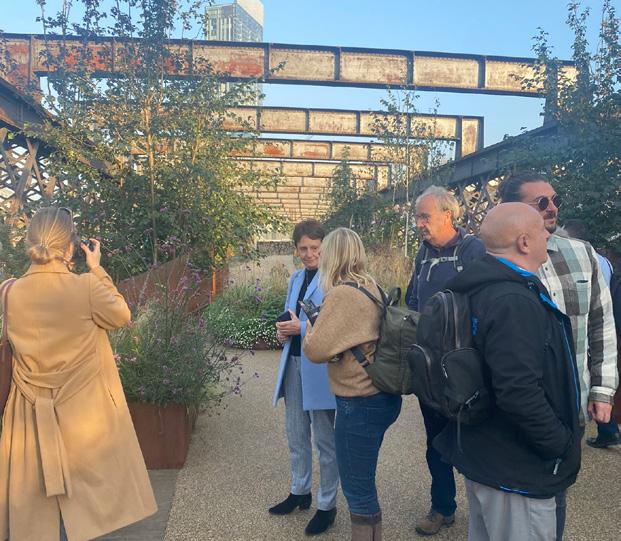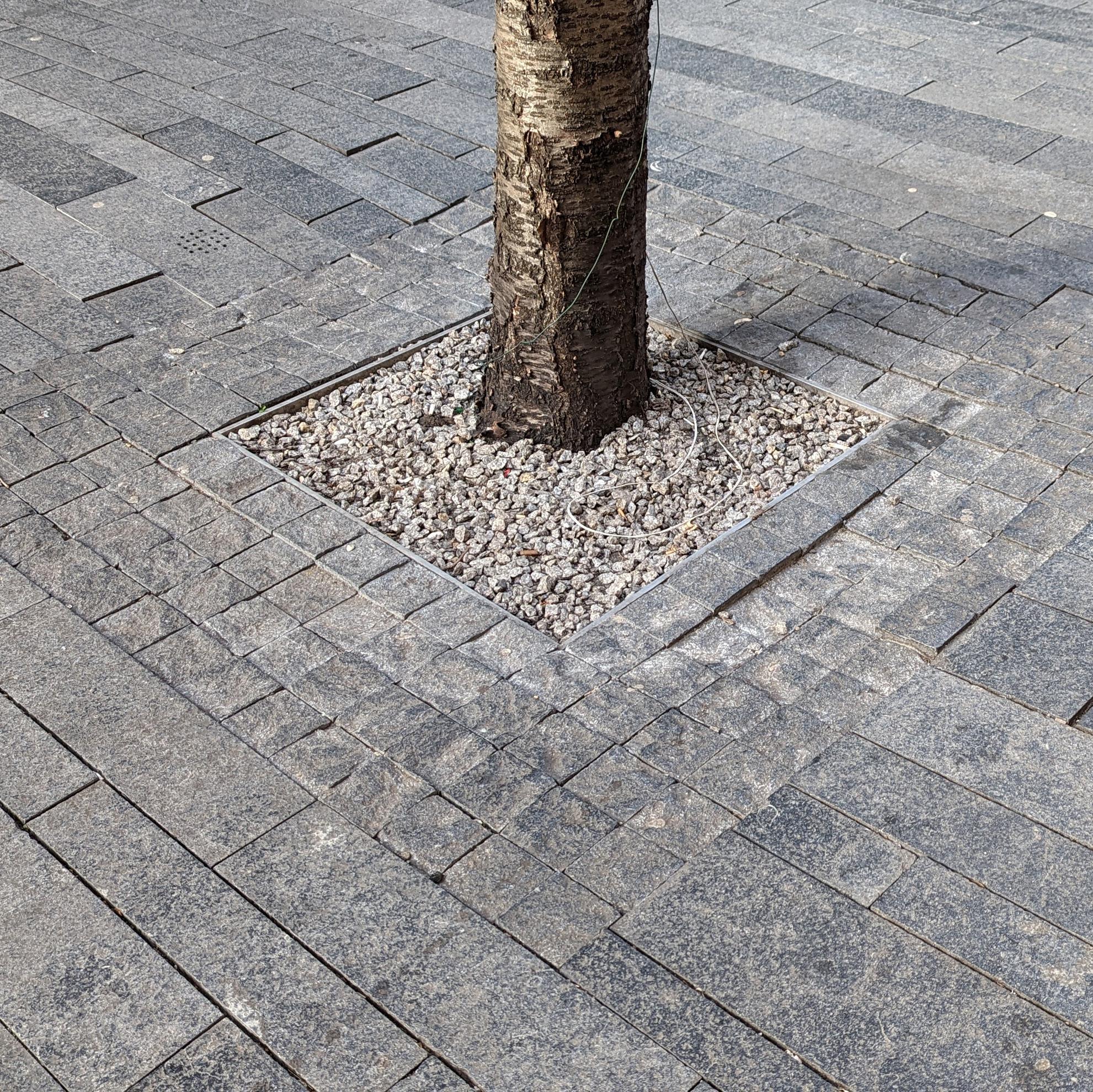
8 minute read
A place-led approach to carbon reduction
1. The masterplan for East Cullompton in Devon by LDA Design requires a carbon reduction and lowemission strategy that goes well beyond the carbon footprint of the buildings to create a local economy in a way that supports low carbon consumption, with food growing, recreation, play and nature on the doorstep. © LDA Design
How we plan and design for new communities has a huge impact on future carbon emissions. So, why does the focus remain fixed on building performance?
David Wesselingh
That we still have so much poor quality housing in the UK, including new build, is a tragedy. In a recent survey, Place Alliance found that 75% of new housing developments were mediocre or poor.¹ Isolated and designed for car dependency, with roads dominating and limited local amenities, many new settlements lock residents into carbon-intensive lifestyles.
So, while the UK has declared a climate crisis, we are continuing to plan and design places that will put more carbon in the atmosphere. The focus for change is still largely on building performance. Whilst important, this overlooks how impacts can be managed in relation to shared infrastructure, embodied carbon within the land, and future mobility. CREDS, the Centre for Research into Energy Demand Solutions, has found that the highest carbon emitting neighbourhoods have an average per person footprint more than eight times larger than the lowest carbon areas.²
LDA Design’s report for the Royal Town Planning Institute (RTPI), Cracking the Code³ argues that design codes should direct the location and form of development, making it easier to live a low-carbon life. Research by City Science reinforced this when it identified that carbon emissions from daily life is likely to be four to six times larger than the impacts associated with Whole Life Carbon assessments of the development itself.

Spatial planning and place-based measures to reduce carbon need to be overt drivers for masterplanning. Transport is the single largest contributor to the UK’s greenhouse gas emissions. Net Zero Transport ⁴, another RTPI report authored by LDA, demonstrates how places can be planned to minimise these emissions through planning for carbon-negative growth zones and creating connected neighbourhoods where most daily needs can be met with a short walk or bike ride.
The UK Green Building Council provides a case study that analyses the shared infrastructure of a 750-home masterplan, including the roads, hard surfaces, utilities and the heat network.⁵ It shows how simple and cost-effective shared infrastructure design interventions, such as reducing parking areas, and replacing hard materials and energy-intensive grey infrastructure with nature-based solutions and sustainable drainage, could reduce the embodied carbon of the original masterplan by over 20%.
Masterplanning solves problems, but when these problems are defined too narrowly, the land cannot be utilised to deliver a broad range of outcomes. A masterplan which is landscape-led is more holistic and is a powerful way to deliver against net-zero commitments. It synthesises carbon management with other ecosystem processes, from preserving and regenerating soil to controlling flooding. Viewing the landscape as one living system makes it easier to design infrastructure to secure positive outcomes for energy, food or travel.
Designing out carbon and enhancing biodiversity are both increasingly data driven, and science allows us to understand the future environment with climate change scenarios. But solutions also have to be rooted in social and cultural change. At LDA Design, we use the original definition of landscape – “land” meaning home and “skeip” meaning to create. We see masterplanning as a social endeavour that should result in places where people belong.
In delivering a new community for East Cullompton in Devon, LDA’s landscape architects have developed a masterplan which seeks to minimise all potential carbon emission sources. It makes the River Culm a central connecting feature of the community, with existing buildings, tracks, trees and hedges incorporated as positive placemaking features. Farm buildings will be retrofitted to become community hubs, ensuring local shops, leisure, work and social infrastructure are in place from the beginning. The masterplan considers how to avoid emissions, reduce consumption, replace high-carbon activity with low-carbon alternatives, and absorb residual carbon emissions through nature-led solutions.

Where we locate and how we plan new settlements is fundamental to reducing emissions. The success of East Cullompton and the future prospects for the town of Cullompton in Devon will be determined by optimising their interdependence. The masterplan by LDA Design thinks about them as two halves joined together by the River Culm.
© LDA Design
The vision is not for East Cullompton to be a standalone community, but instead for it to be integrated with neighbouring Cullompton, with complementary land uses. This will mean East Cullompton can offer greater choice for its future residents in terms of working, living, learning and training and be more resilient in the face of climate breakdown.
Currently there is a river, railway and motorway corridor between east and west parts of Cullompton, but active and shared travel crossings can be prioritised in the reconfiguration of strategic infrastructure. Working with environmental consultancy Environment Systems and City Science, we have developed a carbon and low-emission strategy for East Cullompton that goes well beyond the buildings to create a local economy that supports low-carbon consumption, with food growing, recreation, play and doorstep nature.
The plans look at the benefits provided by nature, from pollinators to soil health, natural water management and carbon storage. At East Cullompton, this approach has guided plans for nature recovery and carbon reduction measures which include avoiding soil disturbance in areas of high carbon storage and creating new areas of woodland and wetland in parts of the site that can deliver the greatest network benefits.
There is a growing choice of tools available to designers and planners, including the place-based carbon calculator from CREDS, which makes a huge amount of free-to-use data available to understand carbon emissions across the UK and contributes to the baseline understanding of an area.⁶ There is however currently no single assessment tool to use, and we therefore need collaboration and generous knowledge sharing within the built environment professions to bring the pieces together.
The quest to reach net-zero carbon is urgent. As an ambition, it is comparable to the post-WWII programme to deliver new homes and new towns, the only time in the last 70 years when the target of 300,000 homes per annum was reached.

The wheel diagram illustrates the benefits of nature or ‘ecosystems goods and services’ that have been used to shape the masterplan at East Cullompton.
© LDA Design
For that scale of tangible result, above all we need systemic change to the way the public sector and relevant professions are trained and educated, structured and organised. We need development corporation-style bodies, properly resourced, that put landscape architects, engineers, designers, ecologists and scientists in the same room as anthropologists, economists, land managers and agronomists, to work creatively together towards the best possible placemaking.
Taking this kind of holistic approach will help to secure not only net zero but also nature recovery and social equality. Place-led solutions promote healthy living and are rich in other associated benefits, delivering quality of life alongside housing supply. More focus on growing food locally, for example, can build community and cut food miles.
Some measures that can help the UK reach its net-zero targets make a limited contribution to the creation of better places. The switch to renewable fuels for private vehicles is one. It improves local air quality which is highly significant for public health, but the switch doesn’t make streets any safer, or more playable, or support active travel. It does nothing to provide equitable access to jobs and services through reliable shared transport networks. It could even become an excuse for resource intensive, car-dependent development to persist.
Place-based carbon management is the way to deliver the improvements we need to see, so that in the future we create neighbourhoods where people thrive, rather than development which is judged mediocre or poor.

David Wesselingh
Landscape architect, urban designer and director at LDA Design
References:
1 Place Alliance. A housing Design Audit for England, Findings and Recommendations. https://placealliance.org. uk/research/nationalhousing-audit/
2 CREDS. Why we built a Place Based Carbon Calculator. https://www.creds. ac.uk/why-we-built-aplace-based-carboncalculator/
3 RTPI. Cracking the Code, How design codes can contribute to net-zero and nature recovery. https:// www.rtpi.org.uk/ media/11054/designcodes-report-final.pdf
4 RTPI. Net Zero
Transport, The role of spatial planning and place-based solutions. https:// www.rtpi.org.uk/ media/9233/rtpinet-zero-transportjanuary-2021.pdf
5 UKGBC. Building the Case for Net Zero: A case study for low-rise residential developments.
https://www.ukgbc. org/ukgbc-work/ building-the-casefor-net-zero-low-risedevelopments/
6 CREDS. Why we built a Place Based Carbon Calculator. https://www.creds. ac.uk/why-we-built-aplace-based-carboncalculator/










